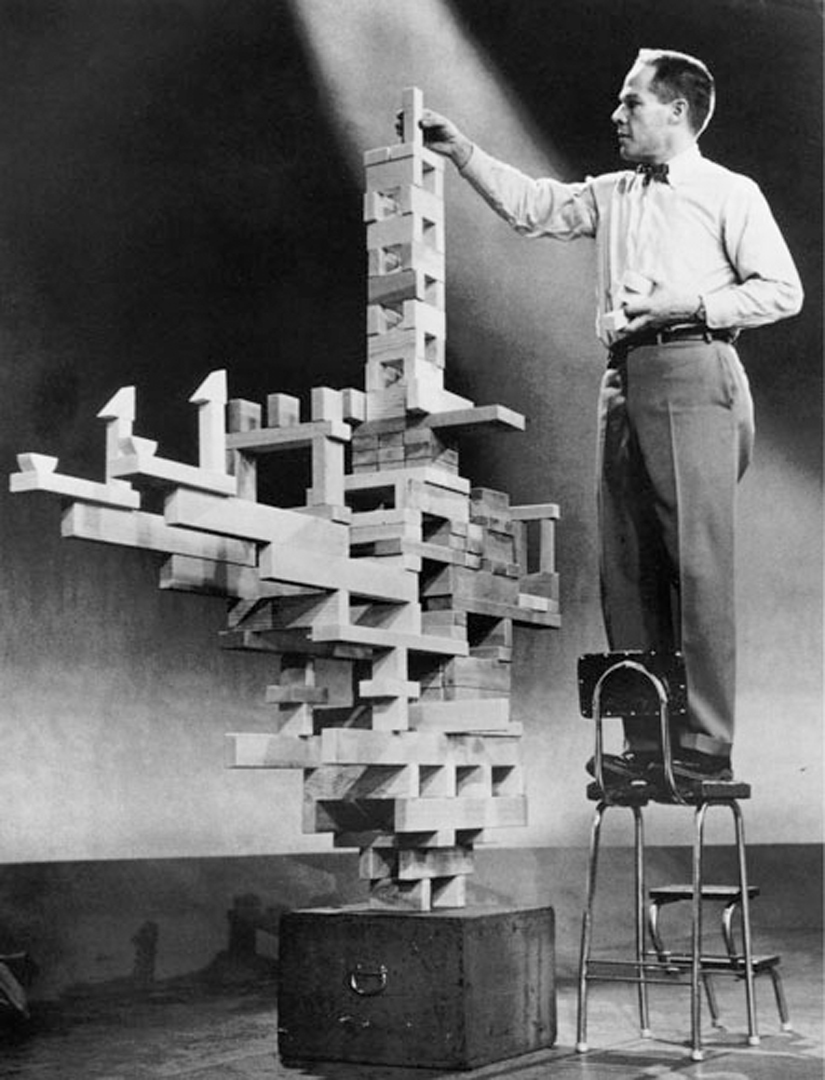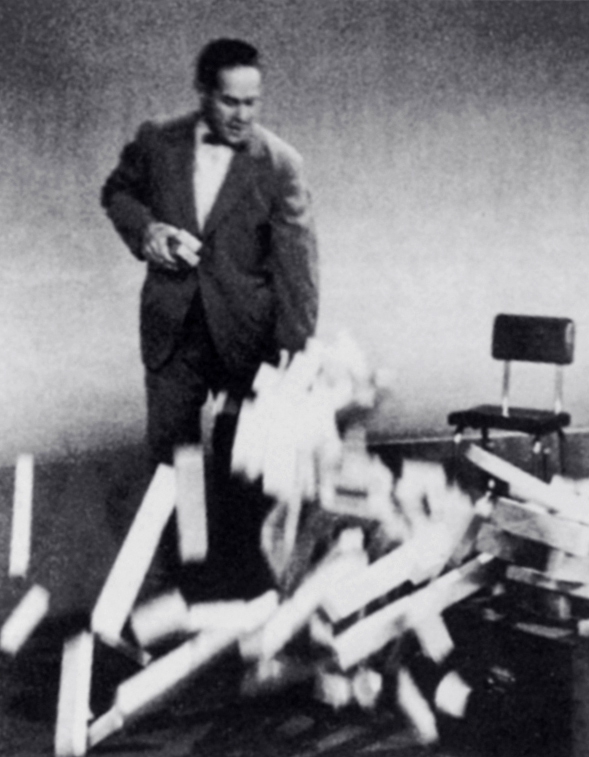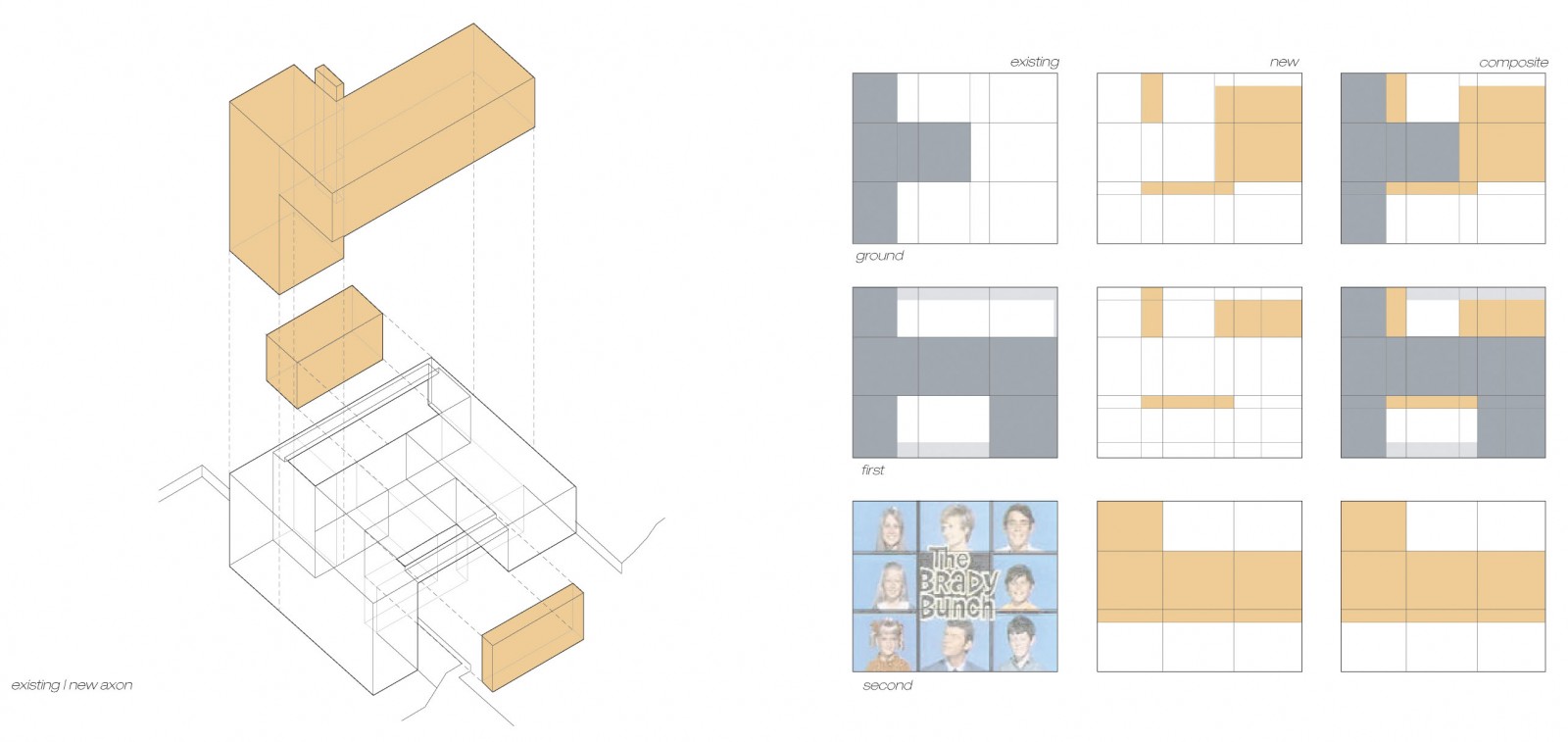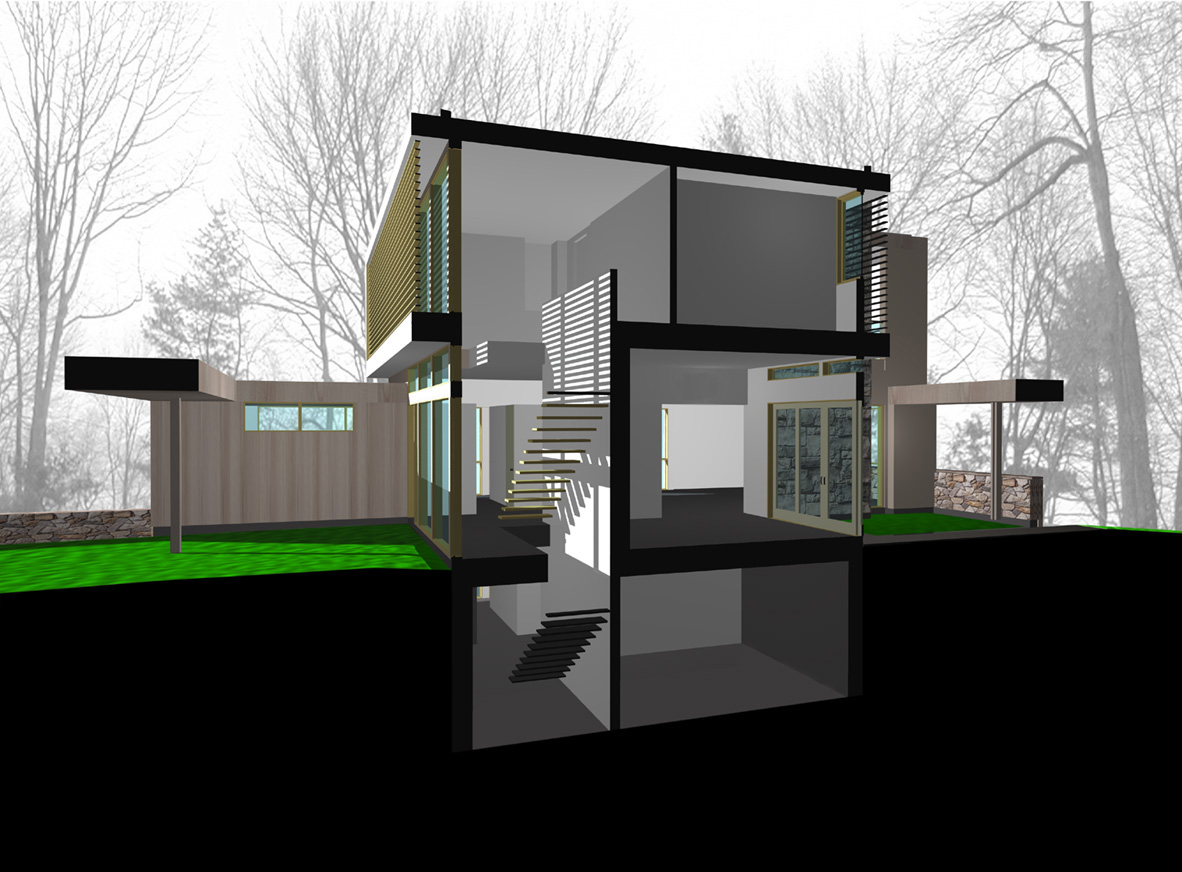The Harvard Five included, as its founders, Marcel Breuer, John Johannsen, Philip Johnson, John Blacklee, and Elliot Noyes. During the 1950s these mid-century “good-life” modernists promulgated an experimental residential design theory and program for modern, single-family residential life. New Canaan became the site of one of these experimental communities; some sixty residences were constructed over twenty years. Less than twenty residences remain standing today. “Documentation Modern,” a non-profit organization in NYC has been working to measure and document these buildings before they vanish to be replaced by neo-colonial, surface deep, developer custom homes (8-10,000 sq. ft. typically in this area).
Recalling the experimental history of the residence, this project examines Noyes’ own design methods through the balancing act of abstract formalism. The task for us in this project was to design an addition/alteration that attends to the current owner’s interest in honoring the original house (at least its shell) while also being responsive to their differing needs and lifestyle in 2002.
Suspended above the original single story box, a clean metallic container acknowledges the 9-square grid and the proportions of the Noyes design. Creating a sectional void along the entry wall, a unique vertical condition is produced to weigh against the initial linearity. This spatial experience goes against the grain and contrasts with the horizontal sensibility of the house. The resulting large, two-story glass curtain wall allows for the registration of changing light and views throughout the space and stair.
Exaggerating the disjunction between the original house and its addition recalls the heritage of the prior design while also creating a series of perceptual disorientations. Taking cues from the art of the 60s and 70s, this reading(s) questions the aesthetic autonomy and formal purity of architecture, not to mention the social engineering embedded in the original design and aesthetic, re-presenting its latent ambiguities and power. Here again “the Ice Storm” should come to mind or think “The Brady Bunch” meets the “Old Navy Store” with the resultant admixture becoming the “Rugby Bunch” ad campaign currently running in commercial syndication. In this architecture project, or more precisely architectural proposition, lifestyles, or forms of life, collide without apology or without remorse.




